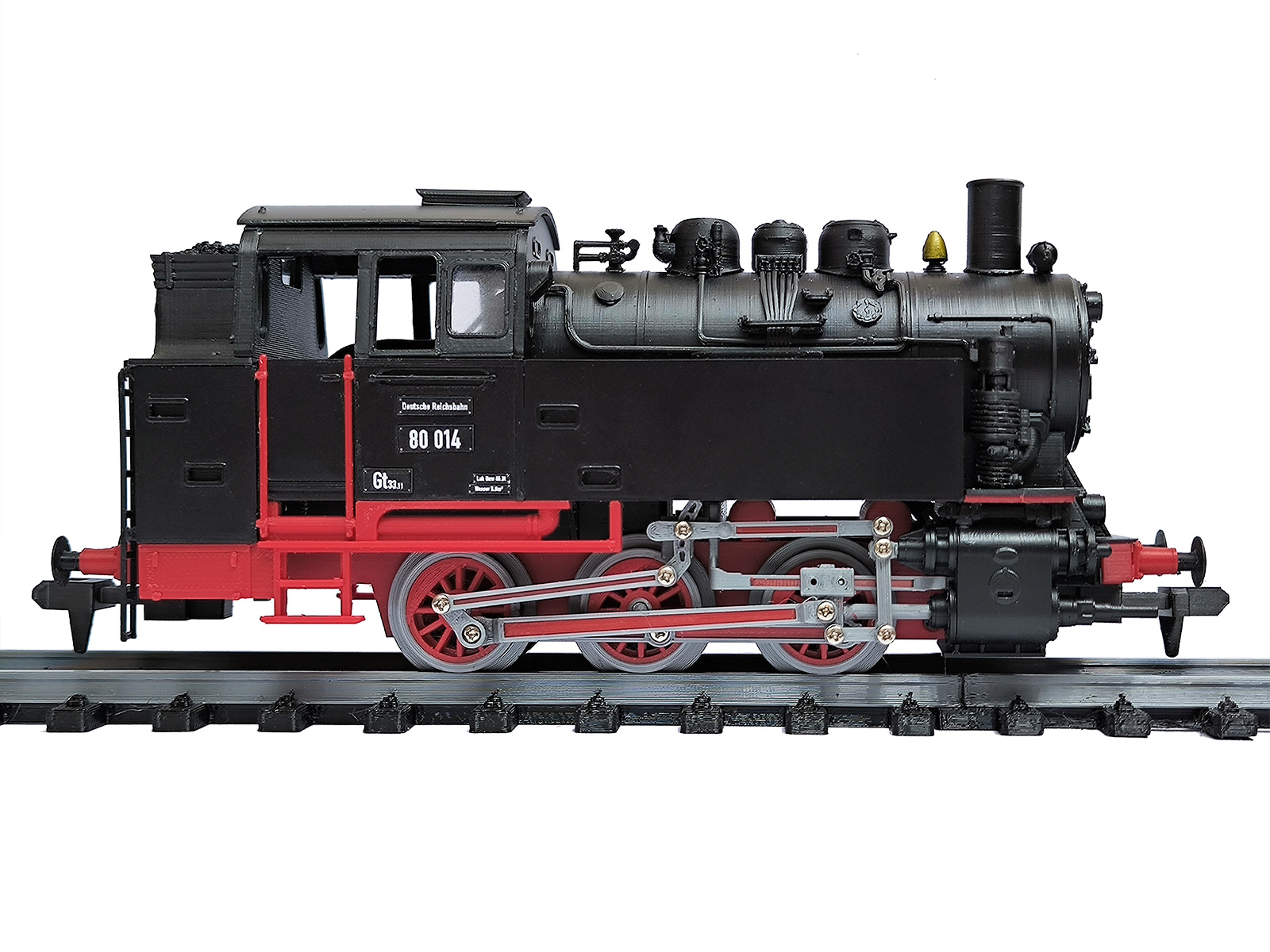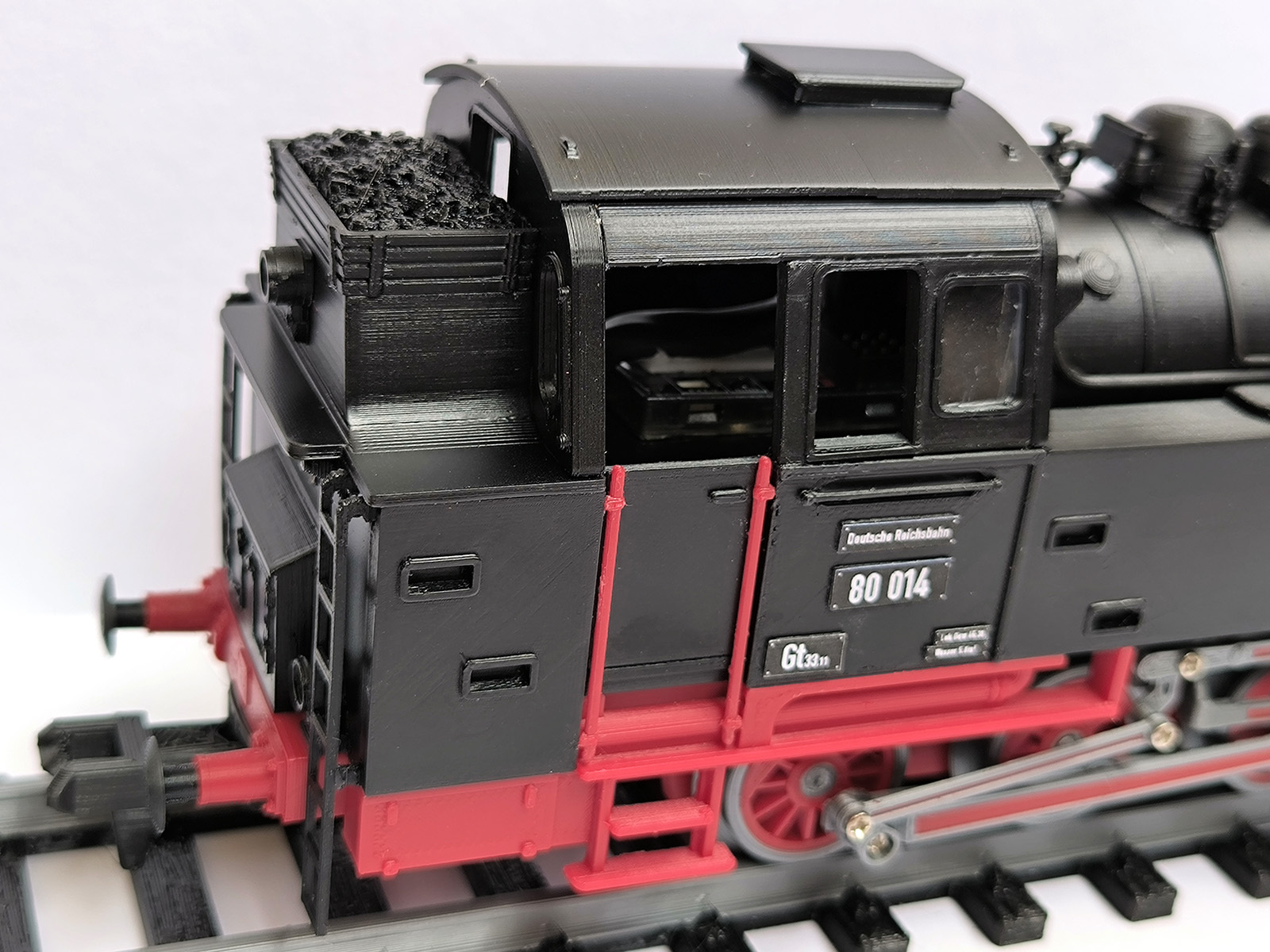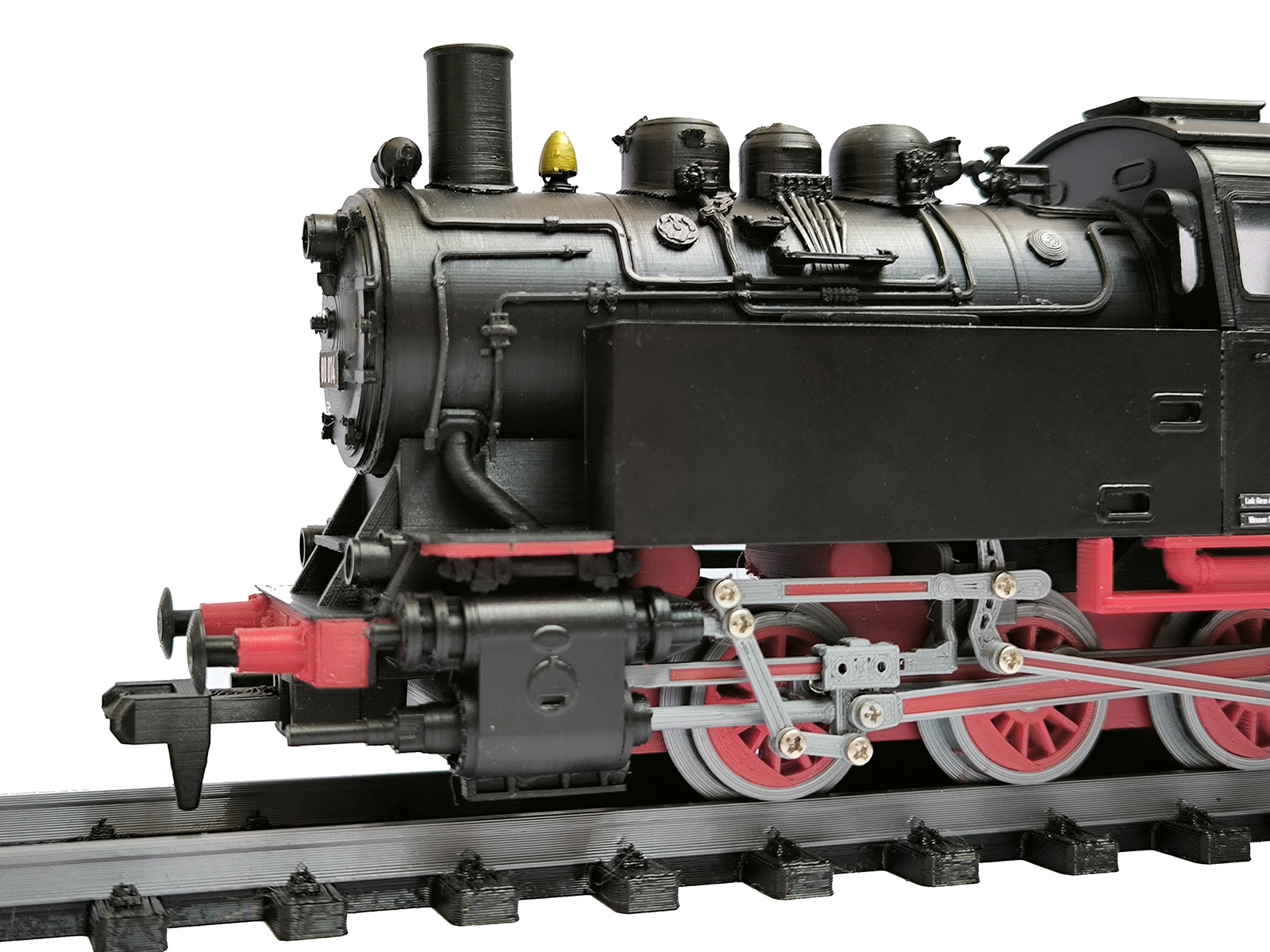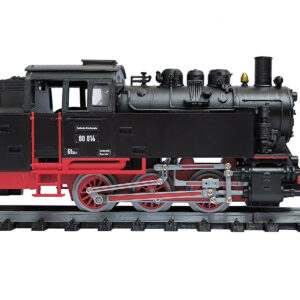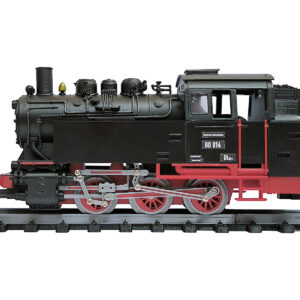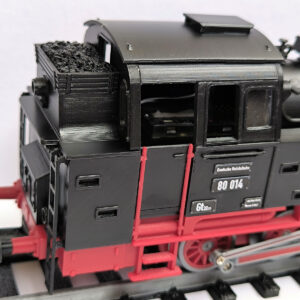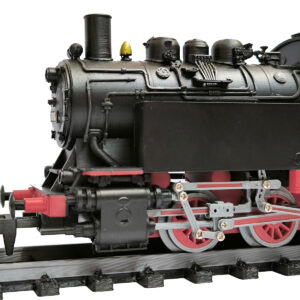Model 80 is a very potent little beast, with it’s high weight, coupled with a strong gearbox it can pull/push over 10 full carriages with ease.
The drivetrain is very detailed, fully functional and runs smooth for a long time with it’s 6 ball bearings.
A very detailed manual and tips how to get great quality prints from FDM printers also comes with it.
Making your own train a lot easier to build and even a bit younger audience can still get the model assembled.
The model even comes with some helpful tools you can print, to make construction of the parts more easier and more precise
The locomotive is made to work with any standard RC remote control but can also do great as a static model off course.
I found the “0” scale a great match for FDM printing and still be able to feature enough details to get a wow factor.
The provided tracks are easily connectable making them also suited for semi-permanent setups or even outdoors (PETG).
All the parts are modelled with precision and positioned correctly for easy slicing and 3D printing.
For those that have dual head (or more) color printers, some parts are pre-processed for being printed in dual color.
But with a bit of red paint, a 1 color printer will do fine too.
Build costs and the used electronics are quite cheap, easily obtainable and work great.
Only basic soldering skills required (connecting some wires)
No Arduino controller boards, programming or uploading code with special USB devices is needed.
Control multiple trains with just one 2.4ghz RC transmitter *.
Required materials.
- Filament: PETG, 300 grams, black/red/silver (or paint some parts)
- Any RC transmitter/receiver with at least 2 analog channels (cars & boats).
- Electronic Speed Controller (ESC) capable up to 3 cell lipo’s. (4 euro)
- Basic DC-motor with gearbox (3 euro).
- 8x AAA NimH rechargeable batteries (8 euro)
- Small battery plugs, wired, male/female
- 3mm LED’s 6x – 12 volt wired (clear white)
- 1m Electrical wire, in 2 colors.
- 6x 3x5x2.5 mm ball bearings.
- 3mm carbon fiber rod – +/- 20 cm.
- Waterproof sandpaper – 600 grit
- Clearcoat matte spray-paint
Model 80 runs best on +/- 12 volt battery packs.
Option 1: DIY Nimh battery pack of 8 AAA cells / 12volts – 800/1000Mah.
The safest option, cheap (8 euros), runs long enough, heavy (we need weight) and won’t brake down when leaving the train unattended.
A description how to make one yourself is provided in the manual)
Option 2: 3 cells LiPo 13,2 volts / 800Mah. Great for pro’s who take care of their LiPo batteries.
To minimize the risk of a meltdown or undervolted battery pack, always run the train with a small Lipo alarm (3 euro).
Cheap ESC’s are quite bad in cutting of at the right voltage, a alarm makes sure you or your kid stops playing before the batteries run dead beyond recovery.
*
With any basic 2 channel RC transmitter you can run 2 trains independently.
With a 4 or more channel RC transmitter you can control up to 4 trains independently.
Any channel not used for a train can be used for track switches or carriage decoupling.
Basic 8 channel RC Transmitters with a receiver cost about € 40,- to 50,-
Separate receivers cost about 8 euro each.
